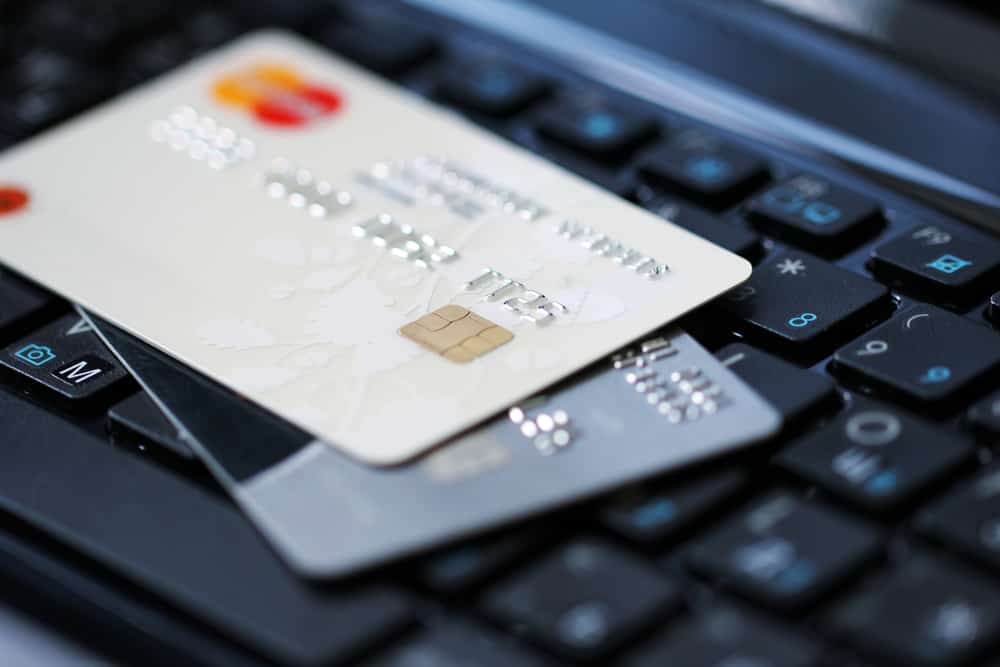A few years ago, my long-term partner and I were living in his home country of Canada, and I put a lot of time and money into obtaining permanent residency. But relationships sometimes don’t move forward as planned. I returned to the U.S. with only a truck full of belongings, my dog and about $25,000 in credit card debt.
After considering several options, I knew my best choice was to eliminate the debt while restarting my freelance business so I could move on with purpose. So I took what might look like drastic measures to many.
Here’s how I slashed my credit card debt to zero over two and a half years:

Photo: Deposit photos
I let go of possessions
I still had a storage unit filled with the furnishings from the house I owned before moving to Canada. I had rented that storage unit for two years, hanging on to living room furniture, cooking utensils and memories. But I couldn’t empty the unit until I had a home. Or could I? I finally decided that most of those items were an obstacle, keeping me in a pay-per-month mode and adding to the debt column.
I sold or gave away most of the contents of the storage unit. The items with sentimental value were sent off to family members. The rest? Just stuff that would slow down my plan for a comfortable life.
Savings: $135 per month.
I canceled subscriptions
Although I held on to my Netflix subscription, I canceled Amazon Prime. Youtube became a fun diversion, and I burned the midnight Kindle, reading dozens of free books I had never gotten around to reading in the past. I also realized that I was paying an autopay monthly membership fee to a group that I no longer attended. Canceling the autopay function saved me $120 per year.
Savings: $22 per month.
I downsized my housing
I bought an old, 13-foot, tow-behind camper and pulled it to my son and daughter-in-law’s home. They opened their arms to me and offered a place in their home for as long as I needed. I didn’t want to live with my family, overstay my welcome, or become a nuisance — and the idea weighed on me. So we talked and agreed it would be a temporary situation. While I was there I was able to focus on building my business, and I began to chip away at that credit card balance.
But I contributed to the household as well, buying groceries, making meals and being on hand for the grandchildren. As a result, I was able to create a beautiful lasting friendship with my daughter-in-law and made wonderful memories with my grandchildren.
My family helped with the repairs to the old camper; we added electrical outlets, a comfortable mattress, and a hinged table for a work space. We removed the kitchen and made way for versatile open countertops.
Savings: Approximately $1,000 per month.
I lowered utility bills
Once I was on the road again, I pulled that little camper to state parks and budget campgrounds. I bought hotspot capability on my phone and chose campsites with strong Wifi so I could continue to work. My campground costs varied but still were still significantly lower than paying for a rental plus utilities. If I was between campgrounds, I boondocked for free at businesses that gave permission or took advantage of dispersed camping at Bureau of Land Management parks.
Savings: At least $100 per month.
I looked for the best credit card offers

At the beginning of my journey, I searched for 0% interest balance-transfer offers and moved my balances from high-interest accounts to 12-month promotional accounts. A chunk of my payments were allocated to interest, so I was able to send the money directly to the principal.
Savings: Approximately $100 per month.
I consolidated my debt
When I found the right balance transfer offer, I combined debt from as many accounts as possible to stay under the maximum amount available for the balance transfer. This way I had one interest-free payment. In the beginning, I couldn’t move all of my debt to interest-free accounts. I had a few cards with remaining balances. Those cards were my first target: Pay off the accounts that still had interest tacked on to the balance. It didn’t take long to cross those accounts off the list.
Savings: Varied.
I paid more than the minimum
Once I saw breathing room in the budget by making the changes, I sent every extra dollar to those credit card accounts, always paying more than the minimum and as much as I could manage.
Savings: None in the immediate term, because the savings were used to make payments on the other credit card accounts. But my money was no longer managing me.
I changed my eating habits

Since I had no kitchen or refrigerator in the camper, I had to keep my grocery buying to a minimum. I learned to cook delicious one-dish meals on a butane stove and boil water for French pressed coffee. I ate a lot of nuts and berries during that time! I found that I didn’t crave fancy meals. I was eating healthy and never felt hungry. My own grocery bill was a fraction of the cost of my dog’s food and care. Note: My beloved dog was never put on a special debt-free plan. Her needs were a priority, and we had regular vet visits and bought the food she was accustomed to eating.
Savings: approximately $300 per month.
I took advantage of work that was available
When a family member offered me her cabin in Ontario, Canada, as a potential temporary parking spot, I crossed the border again into Canada. Then the world changed in the spring of 2020. My temporary situation turned into a place to regroup, and with a still-valid work permit in hand, I decided to look for work as an essential worker until my permit expired and the borders were open to returnees. Although my business slowed down for a while, it never came to a full stop. I built new relationships with clients and colleagues.
Savings: It’s hard to say. I was ready to get off the road at that point. Here I could live in a space that was larger than 100 square feet and had some time off the road.
The end of the story
I came back to the U.S. in May 2021 with a fraction of the original $25,000 in remaining debt, all of which was in a 0% balance transfer account. I sold the camper and used the proceeds to rent an apartment and start over. Although my monthly expenses were higher, I continued to focus on paying off that pesky credit card debt by staying on a tight budget, working as long and as often as possible, and accounting for every expense. In November 2021, I sent off the last payment.
I was debt-free! I paid off $25,000 from June 2019 to November 2021, in a total of 29 months.
Letting go of property, place and any pride that stood in the way of my progress helped me remember what is really important. Loved ones helped me through the transition and supported me in my goals. That is forever priceless to me.
Today, my goals are different. I am again ready for a home base of my own, and for different adventures. I stay on a frugal monthly budget. Lights are turned off when I don’t need them, and I use smart power strips and energy-saving bulbs. Food is never wasted.
Although your journey will be different than mine, you can apply some of the same ideas to your own financial goals. Of course, your changes may or may not be so extreme, but every step is monumental in the journey to financial freedom.
If you liked this post, you may also like:
